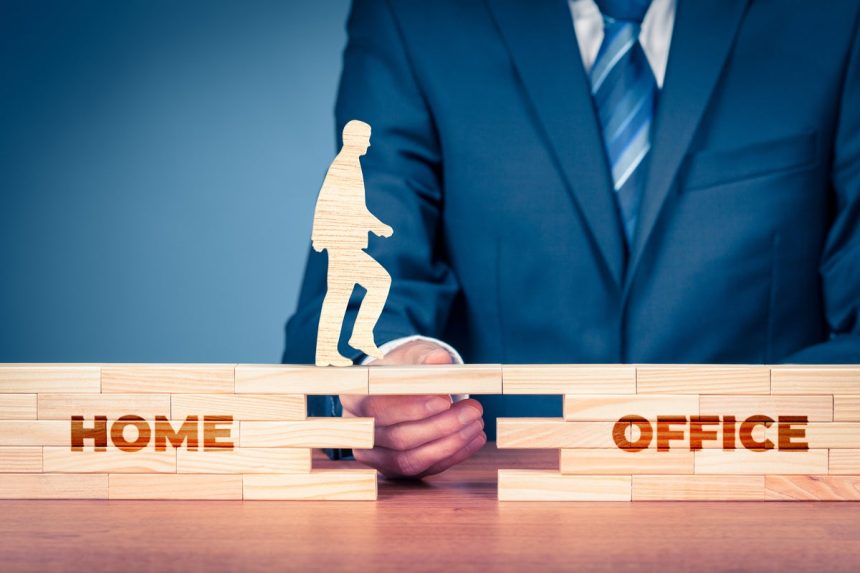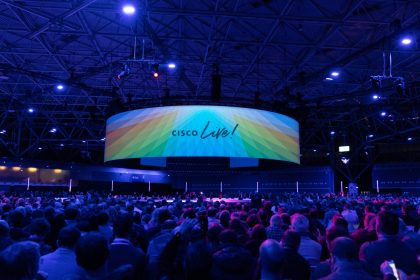Forced back into the office, many employees have admitted to showing up for just a few hours — enough time to swipe in with their employee badge, have a cup of coffee, and be seen in the workplace — then heading back home to do their work, according to a new study.
Coined as “coffee badging,” the trend showed up on a new survey of 2,000 full-time US workers conducted by videoconferencing tech vendor Owl Labs.
Owl Labs said its seventh annual State of Hybrid Work report revealed that more than half (58%) of hybrid workers said they are coffee badging to meet the minimum in-office requirement each week. Another 8% of respondents said they haven’t been coffee badging but would like to try it.
Apart from the survey, industry analysts said the behavior isn’t surprising.
“The idea of coffee badging is consistent with other behaviors we’ve seen during the hybrid work era,” said J.P. Gownder, a vice president and principal analyst at Forrester Research. “One client told me that he, himself, drove into the parking garage to badge in because he knew his company tracked it. He drove right out afterwards.”
The fundamental issues with coffee badging go deeper than shirking responsibilities, according to Gownder. Workers engage in the behavior “when employers aren’t doing a great job providing them with an environment for productivity or work/life balance,” he said.
“For example, if someone has a lot of individual work today, they’re more likely to be productive at home. If they have collaborative work, in-person offices can accelerate the success of those collaborations,” Gownder said. “If they’re putting in a lot of hours, they might need to have some flexibility during the day. Context matters to employees, and flexible hybrid policies can match context to location.”
Companies such as Amazon, Apple, BlackRock, Disney, J.P. Morgan, Meta, Salesforce, and Zoom and working hard to entice — or even force — their employees to return to the office.
Caitlin Duffy, Research Director for the Gartner HR practice, said the research firm hasn’t collected data on whether employees are engaging in this specific coffee badging behavior, but she wouldn’t be surprised if it were happening, “because it tracks with what we tend to see resulting from employee monitoring technologies.
“Unfortunately, these technologies often backfire. Monitoring techniques typically provide an incomplete picture of what employees do all day, putting too much focus on idle time and nonwork activities, and tracking activity or production volume — not the outcomes that really matter to the business,” Duffy said. “They also incentivize counterproductive work behaviors, as employees may end up trying to look busy to game the system rather than focusing their energies on doing their best work.”
 Owl Labs
Owl LabsThe costs of in-office work
The Owl Labs survey revealed that US employees simply don’t want to spend time and money on frequent office visits, and many companies have more work to do to provide an attractive, productive, and stress-free office environment that makes employees want to gather.
One in three respondents (33%) said they spend 31-45 minutes commuting one-way to their offices.
Workers spend on average $51 per day when they go to the office, which is $408 per month for hybrid workers and $1,020 per month for full-time office workers (meaning full-time in-office employees spend three times as much as full-time remote workers), according to Owl Labs.
Those costs includes a daily average of:
- $13 on breakfast/coffee
- $16 on lunch
- $14 on commute
- $8 on parking
- $20 per day on pet care (among those who engage pet sitters or walkers)
Another study published earlier ths year revealed that when employees are allowed to work remotely, they most often use the time they would have spent commuting to the office working. On average, employees save 72 minutes in commute time every day when they’re allowed to work from home rather than in the office, according to the Global Survey of Working Arrangements (G-SWA) study performed by the National Bureau of Economic Research (NBER).
Yet about 42% businesses have a return-to-office mandate, according to a May Gartner survey of 78 HR leaders. However, 39% of those HR leaders also said they don’t mete out any consequences when employees don’t meet attendance requirements.
Nearly three in four Owl Labs survey respondents (69%) believe that their company is requiring them to work from the office because of traditional work expectations. Almost one in four (23%) said they’d changed companies in 2023, and that change of job was more common among full-time office workers (26%) than hybrid/remote workers (17%).
 Owl Labs
Owl LabsIf they were no longer able to work remotely, 29% of hybrid and remote workers surveyed by Owl Labs said they’d expect a pay increase to make up for additional costs. Conversely, one in four surveyed (25%) said they’d be willing to sacrifice 15% of their annual salary for flexible working hours.
The Owl Labs survey, which was performed in June, spanned SMBs with fewer than 100 workers (23%) to midsized organizations (33%) to large firms with more than 1,000 employees (30%). Millennials (aged 27 to 42) made up the majority of respondents (67%). Gen Z (18-26) made up 14% of respondents; Gen X 15% of respondents, and Baby Boomers represented only 4%. The sex of respondents was fairly even, with men making up 52% and women making up 48% of those surveyed.
Another concept the survey revealed is “polyworking,” which Owl Labs described as workers who have two or more jobs.
“Our report showed us that almost half of employees (46%) have at least one additional job or “side hustle” outside of their main full-time job, with an additional 20% saying they currently do not, but would like one,” the report stated. “Think it’s a remote thing? Think again. Full-time office workers are more than twice as likely to have an additional job than hybrid and remote workers.”
 Owl Labs
Owl LabsGiving workers what they want
Frank Weishaupt, CEO of Owl Labs, said this year’s survey revealed a disconnect between employers and employees on what they need in order to return to the office.
“While many blindly put mandates into place, what employees really want is private spaces, a casual dress code, and lunch, snacks, beverages covered for them. One of the most important factors for employees is also good technology, with 83% saying it’s a top factor,” Weishaupt said.
Whether it’s a video call taking the place of a time-consuming business trip or AI helping with daily tasks, technology is a huge factor in their work lives, Weishaupt said.
“Many feel that their companies have not put the right tech in place for hybrid work yet. Only 37% of employers have upgraded their video meeting technology and 28% expanded collaboration and/or meeting spaces,” he said.
Loretta Li-Sevilla, HP’s Head Future of Work, Business Incubation & Design for Services, said focusing on making the in-office experience at least as good as an employee’s at-home office has enticed workers back to the office for the right reasons.
Unlike many companies mandating a return to office, HP has settled on a more relaxed view of hybrid work, enticing workers to come in with the latest technology and letting them and their managers choose when they need to be in the office instead of mandating a set number of days.
“When employees feel supported and empowered, they perform their best,” Li-Sevilla said in an earlier interview with Computerworld. “To ensure people have the right toolset, we pair people with the right device and ecosystem for their workstyle so they can be productive — from high-performance notebooks with long-lasting battery life when working on the go to the right conferencing tools to feel present from anywhere.”
 Shutterstock/Southworks
Shutterstock/Southworks HP designed its Palo Alto, CA headquarters office to create a sense of community and collaboration with communal spaces and hot desks that have docking displays with built-in webcams that allow connection with one cable, “so people don’t have to re-learn how to set up their environment every time they come into the office.”
“With the rise of hybrid work, it’s crucial to have a smooth transition from the office to home or any other location so employees can maintain their productivity,” Li-Sevilla said.
More than nine out of 10 of those surveyed by Owl Labs (94%) said they’re willing to return to office, and more than one-third of hybrid workers (38%) would be more likely to go to the office if their companies paid for their commuting costs, while 28% could be swayed by daycare or eldercare subsidies or on-site alternatives, a likely result of the caregiver shortage.
Nearly three in four employees (72%) said a flexible or nonexistent dress code is important to them. About a quarter of all workers (24%) would be enticed to go to the office if they could wear any clothing or styles they choose, with another quarter (25%) saying they would even take a 15% pay cut for the privilege.
 Owl Labs
Owl LabsOne technology employees want their companies to adopt overall is artificial intelligence or an AI assistant; 48% of those surveyed want to see their companies deploy AI, and about 44% them believe AI will help them do their jobs faster and more effectively.
Augmented or mixed reality devices are next on the wish list at 44%, while 38% said they would like to use holograms or avatars in the workplace.
“By considering tech and its place in the office as well as the real perks workers want, employers can make for a smoother transition back to the office,” Weishaupt said.




